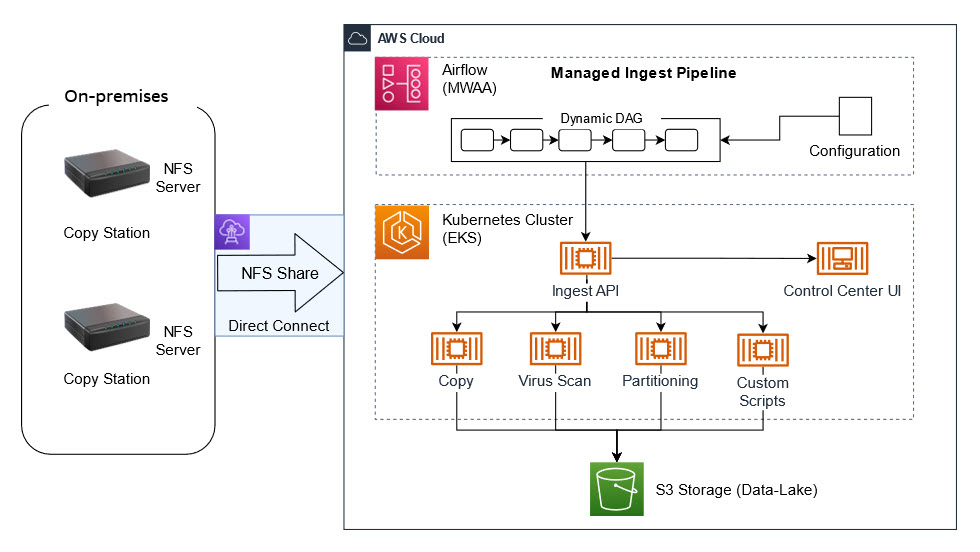AWS Architecture Blog
Category: Compute
How Experian uses Amazon SageMaker to Deliver Affordability Verification
Financial Service (FS) providers must identify patterns and signals in a customer’s financial behavior to provide deeper, up-to-the-minute, insight into their affordability and credit risk. FS providers use these insights to improve decision making and customer management capabilities. Machine learning (ML) models and algorithms play a significant role in automating, categorising, and deriving insights from […]
Using Amazon Aurora Global Database for Low Latency without Application Changes
Deploying global applications has many challenges, especially when accessing a database to build custom pages for end users. One example is an application using AWS Lambda@Edge. Two main challenges include performance and availability. This blog explains how you can optimally deploy a global application with fast response times and without application changes. The Amazon Aurora […]
How Meshify Built an Insurance-focused IoT Solution on AWS
The ability to analyze your Internet of Things (IoT) data can help you prevent loss, improve safety, boost productivity, and even develop an entirely new business model. This data is even more valuable, with the ever-increasing number of connected devices. Companies use Amazon Web Services (AWS) IoT services to build innovative solutions, including secure edge […]
Use AWS Step Functions to Monitor Services Choreography
Organizations frequently need access to quick visual insight on the status of complex workflows. This involves collaboration across different systems. If your customer requires assistance on an order, you need an overview of the fulfillment process, including payment, inventory, dispatching, packaging, and delivery. If your products are expensive assets such as cars, you must track […]
Find Public IPs of Resources – Use AWS Config for Vulnerability Assessment
Systems vulnerability management is a key component of your enterprise security program. Its goal is to remediate OS, software, and applications vulnerabilities. Scanning tools can help identify and classify these vulnerabilities to keep the environment secure and compliant. Typically, vulnerability scanning tools operate from internal or external networks to discover and report vulnerabilities. For internal […]
Modernized Database Queuing using Amazon SQS and AWS Services
This blog post was last reviewed/updated August, 2022. The updated version shown below is based on working backwards from a customer need to ensure data consistency post migration, to a modernized microservice architecture. A queuing system is composed of producers and consumers. A producer enqueues messages (writes messages to a database) and a consumer dequeues […]
Ingesting Automotive Sensor Data using DXC RoboticDrive Ingestor on AWS
This post was co-written by Pawel Kowalski, a Technical Product Manager for DXC RoboticDrive and Dr. Max Böhm, a software and systems architect and DXC Distinguished Engineer. To build the first fully autonomous vehicle, L5 standard per SAE, auto-manufacturers collected sensor data from test vehicle fleets across the globe in their testing facilities and driving […]
Modernize your Penetration Testing Architecture on AWS Fargate
Organizations in all industries are innovating their application stack through modernization. Developers have found that modular architecture patterns, serverless operational models, and agile development processes provide great benefits. They offer faster innovation, reduced risk, and reduction in total cost of ownership. Security organizations must evolve and innovate as well. But security practitioners often find themselves […]
Use Amazon EKS and Argo Rollouts for Progressive Delivery
A common hurdle to DevOps strategies is the manual testing, sign-off, and deployment steps required to deliver new or enhanced feature sets. If an application is updated frequently, these actions can be time-consuming and error prone. You can address these challenges by incorporating progressive delivery concepts along with the Amazon Elastic Kubernetes Service (Amazon EKS) […]
Migrating a Database Workflow to Modernized AWS Workflow Services
The relational database is a critical resource in application architecture. Enterprise organizations often use relational database management systems (RDBMS) to provide embedded workflow state management. But this can present problems, such as inefficient use of data storage and compute resources, performance issues, and decreased agility. Add to this the responsibility of managing workflow states through […]









